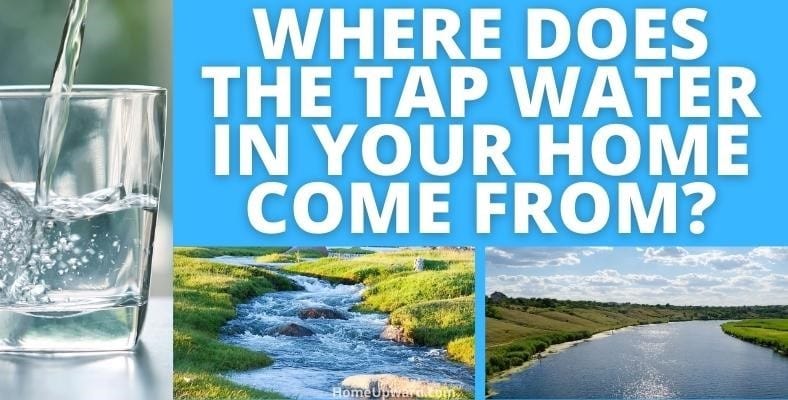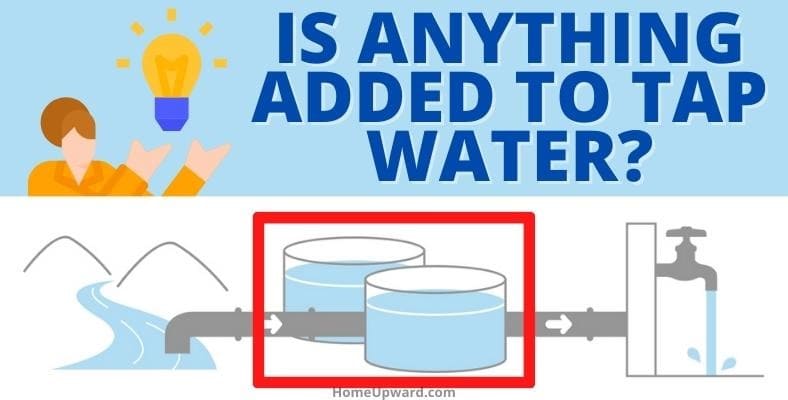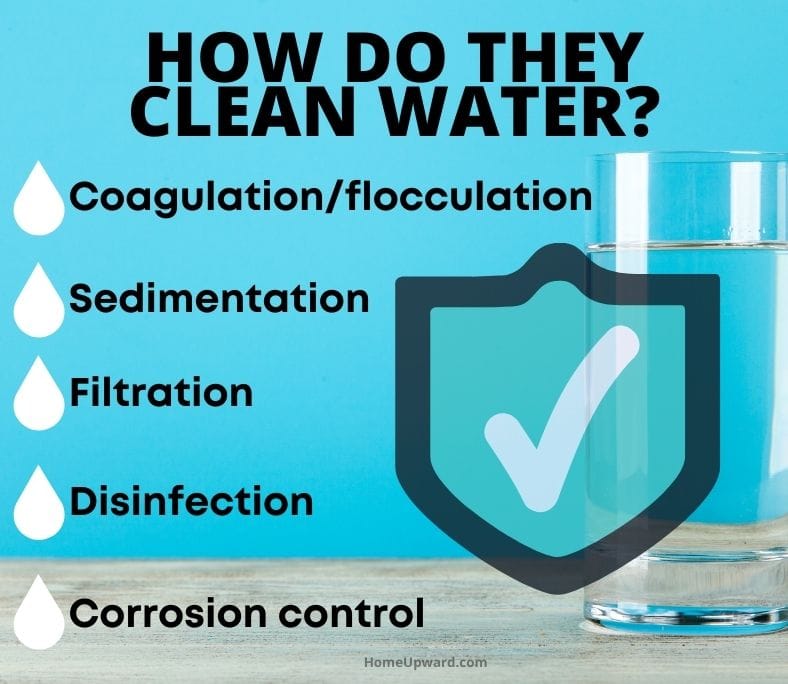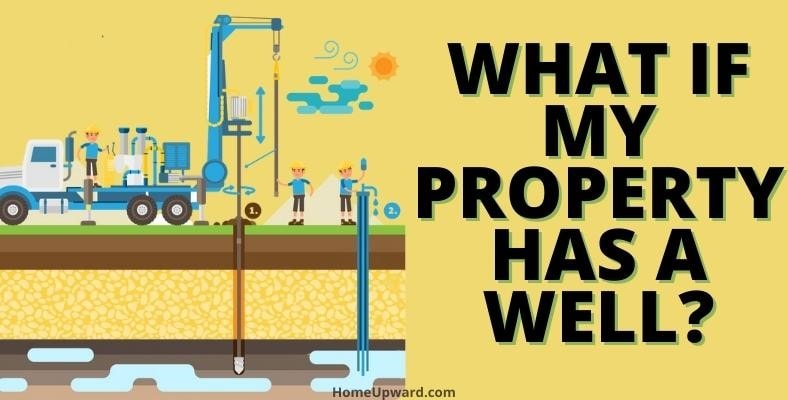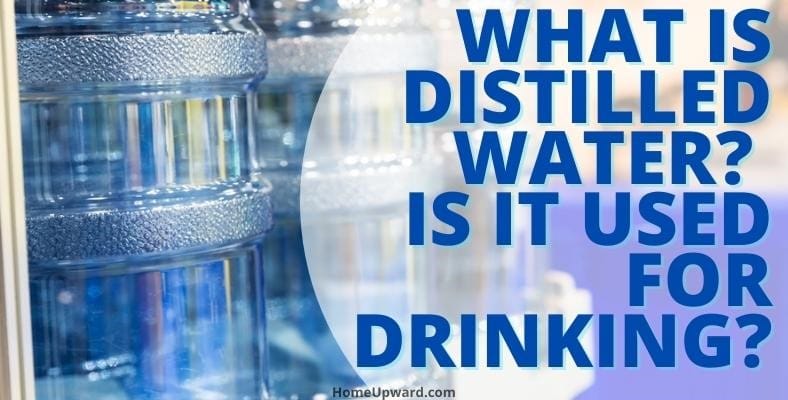The water that flows out of our faucets has a long journey from its source to our home and is slightly different in each city. It’s wonderful having.
Ever wondered where your tap water is coming from? In this article, you’ll find out and also learn all kinds of great facts about water!
Contents
Where does the tap water in your home come from?
Generally, two-thirds of the water we drink comes from rivers and streams. Other sources of drinking water include reservoirs, lakes, or groundwater.
If you would like to see the source of the drinking water at your home, take a look at this interactive map. Click on Access the DWMAPS application and type in your address to see your drinking water providers.
On that same website, also check out the EPA’s standards for drinking water safety and ways that the EPA is working to protect source waters. Once the water leaves the rivers, it enters a series of pipes and treatment plants before entering your home.
Is anything added to tap water?
Chemicals are added to drinking water to clean it. The most common chemical added for this purpose is chlorine.
Another chemical that is often found in drinking water is fluoride. Although fluoride can be found in water naturally, many cities add it to drinking water to improve dental health.
People are fighting the addition of fluoride to drinking water in court, citing that it can damage your neurological system. It may only be a matter of time until cities are forced to stop adding fluoride to water.
Other chemicals are certainly found in tap water, for instance, lead from corroded pipes, and other chemicals that did not get removed during the cleaning process.
How much chlorine is in tap water?
Chlorine levels vary from city to city. However, the EPA’s regulations state that the chlorine level in public water can’t exceed four parts per million. Testing for chlorine levels is left up to water treatment facilities.
If facilities don’t test often or accurately, more chlorine could be reaching your tap than this amount.
Where do cities get their water?
In general, cities get their water from above-ground sources including rivers, lakes, snowpacks, or reservoirs, or underground sources such as wells or aquifers. Here are just a few examples of major cities and the source of their drinking water:
- Denver to Los Angeles is supplied with water, thanks to the lifeline of the Colorado River.
- The Atlanta metro area gets its water from the Chattahoochee and Flint rivers.
- Minnesota’s Twin Cities have the Mississippi River to thank for their drinking water.
- New York drinking water comes from the Delaware River basin.
- Seattle gets its drinking water from the Cedar and Tolt rivers.
How do they clean water?
Each city has a slightly different way of cleaning water. Here is one example of the process from the city of Colorado Springs, CO.
Colorado Springs gets the most of its water from snowmelt in the Rocky Mountains. The city has a laboratory that runs more than 400 tests per month to make sure that the water is clean high.
The way the water is cleaned includes five steps:
- Coagulation/flocculation: Alum, polymer, and sometimes lime and carbon dioxide are added to raw water coming in from the tanks. These chemicals are added in mixing basins to make it easy for small particles in the water to stick to one another and form larger particles.
- Sedimentation: Once the larger particles have been formed, they will sink to the bottom of the basin and the sediment can be removed.
- Filtration: The water is then sent through layers of fine materials. These include sand or sand mixed with coal. This filtration process removes smaller, suspended particles.
- Disinfection: If any bacteria, microbes, or viruses remain, they will now be treated with disinfectant. The amount of disinfectant is carefully monitored. Fluoride occurs naturally in the water, but it’s also added during this time.
- Corrosion control: Alkaline substances are added to maintain pH. This will reduce corrosion in the plumbing systems of homes and businesses as well as in the distribution system.
How does water get to your house?
Each city has a wide network of underground pipes ready to carry water from the treatment plant to homes. Pipes leaving the water treatment plant are quite large and will have from 8 to 144 inches in diameter.
These large pipes move the water from the treatment plant to the main population centers. Once the water hits neighborhoods, it flows through increasingly smaller pipes until it reaches your home.
Pumps are placed along the route to ensure good water flow.
What if my property has a well?
If your property has a well, well drillers will drill down into the groundwater. After this, a pump system will be installed to deliver the water from the ground to your home.
Well water still needs to be treated, so be sure to have the water tested and a system installed to treat the water before reaching your home.
Tap water vs. other types of water
When you want to choose which type of water to drink, there are many things you need to consider. These include your health, its effect on the environment, and convenience.
A few other options for water besides tap water include bottled water, spring water, distilled water, purified water, and alkaline water. You can even distill your own water at home. The biggest benefit of tap water is that there is no plastic waste involved.
If you’re unhappy with the quality of your tap water, you can use an extra filter on the faucet, in a pitcher, or in your refrigerator. After you have filtered the water, fill up reusable bottles or containers so you’re ready to go without having to wait for more filtering time.
Bottled water and alkalines
Bottled water has been found to contain tiny pieces of plastic. There are a huge number of small pieces of plastic in bottles of water, so even though it may be free from other impure substances, this is a huge concern.
Alkaline water is a sort of cleaner water. It has been filtered, and minerals such as magnesium, sodium, calcium, and potassium are added to it.
It also has an alkaline pH that is supposed to get rid of toxins and restore blood pH levels that have gotten out of the ideal range because of stress, inactivity, or poor eating.
What is natural springwater?
Springwater is defined as water that comes from an underground source and flows naturally to the surface of the Earth. In some instances, there are springs that you can visit and bring a container to collect the water.
Other times companies will bottle the spring water. Just know that in this case, the water is often transported in trucks to a factory and bottled there.
Be aware that even natural spring water has impurities, so it’s best to research the water before drinking it.
What is distilled water? Is it used for drinking?
Distilled water is water that is boiled and turned into vapor. It then cools back into liquid again in a new container.
This is a way to purify water since any impurities in the water will not turn into vapor when boiled and will remain in the original container.
You can drink distilled water, but it will likely not taste all that great. It has been so purified that it’s been stripped of even the important minerals in the water. Therefore it’s not in your best interest to drink only distilled water.


